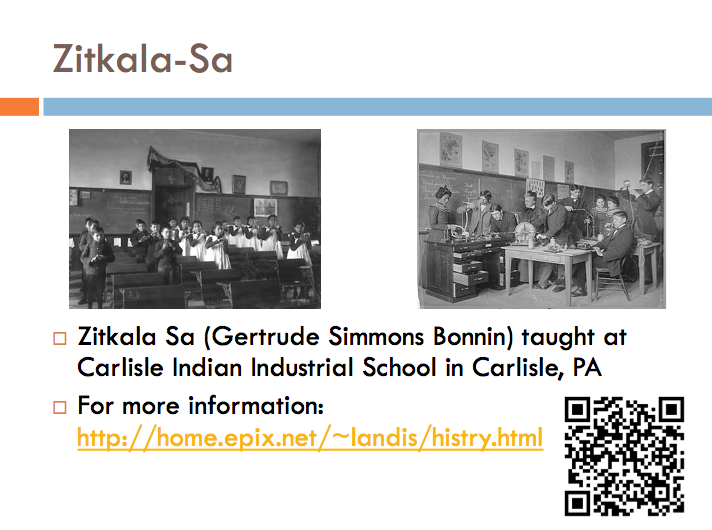
Image Credit: Screen capture of a powerpoint from my E314 course
For my final viz post of the semester (I'm officially off duty in the spring, but might pop back in occasionally), I'm going to reflect back on one of the more pedagogically interesting technologies I've discussed this semester -- using QR codes in the classroom.
I've talked with a lot of people about QR codes this semester and encountered discussions of them all over the web. On viz, I've written entries on their history and background, use in outdoor art intended for Google Satellites, and use in artwork in general, including material generated by this semester's DWRL guest speaker, DJ Spooky. viz has also had the pleasure of collaborating with the DWRL's Immersive Environments group who are getting up close and personal with QR codes and incorporating digital links into real world environments.
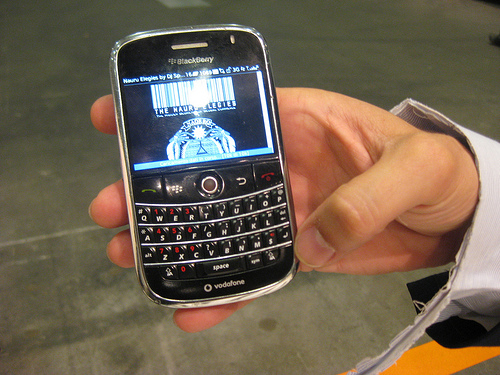
Image Credit: Link from DJ Spooky QR code ("Nauru Elegies") at Art Basel, Summer 2010, from Mickie Quick's Flickr photostream
While I only discussed QR codes in passing with my Reading Women Writers class this semester, I've found several interesting discussions of their use in pedagogical contexts on several teaching blogs. I've also been asked several times if I think that QR codes are going to stick around for good in cultural contexts, though their commercial applications seem increasingly entrenched with Calvin Klein featuring them in provocative ads and Ralph Lauren allowing customers to shop instantly from their ads through a QR code link.
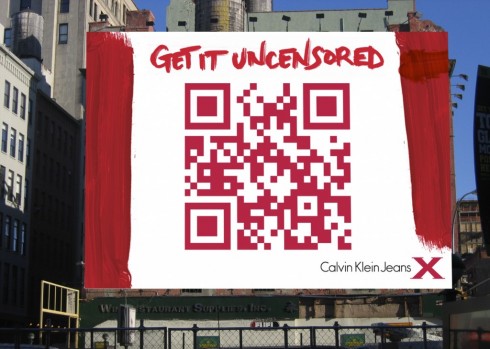
Image Credit: New York Calvin Klein Ad, by way of Signature 9
One seemingly unavoidable collision is presented by the increasing number of smart phones in the backpacks of college students. Having been a student all the way from when phones were an abnormality to be warred against through when they were an unavoidable annoyance - "don't even have it on vibrate, just turn it off!" - I'm eager to embrace this technology. Teaching in the DWRL has shown me that students are more likely to be engaged in course materials when these materials are available to them in the mediums that they use most often and with which they are most comfortable. Use of new and familiar technologies should not undermine standards of classroom etiquette -- in fact, incorporating these technologies into the classroom has inspired me to present materials in my Rhetoric and English courses in ways that engage students' attention and keep them focused on the matter at hand. QR codes are a great way to encourage this kind of learning and exploration.
Pedagogy blog Eat. Sleep. Teach. has several outstanding suggestions for incorporating these codes into classroom life. QR codes are a great pre-class "hook" (and can be seconded by shortened URLs in computer classrooms for students without smart phones). QR codes can be linked with YouTube videos or other media, class blogs, or other online resources to get students thinking about the topics for the day. They also suggest linking up additional information or questions during presentations, featuring information for new students on a tag. Other activities where images or facts are linked to QRs and must be researched or identified or where visual images for rhetorical analysis may be presented out of context and then analyzed are also possibilities. Social games are a more in-depth option.
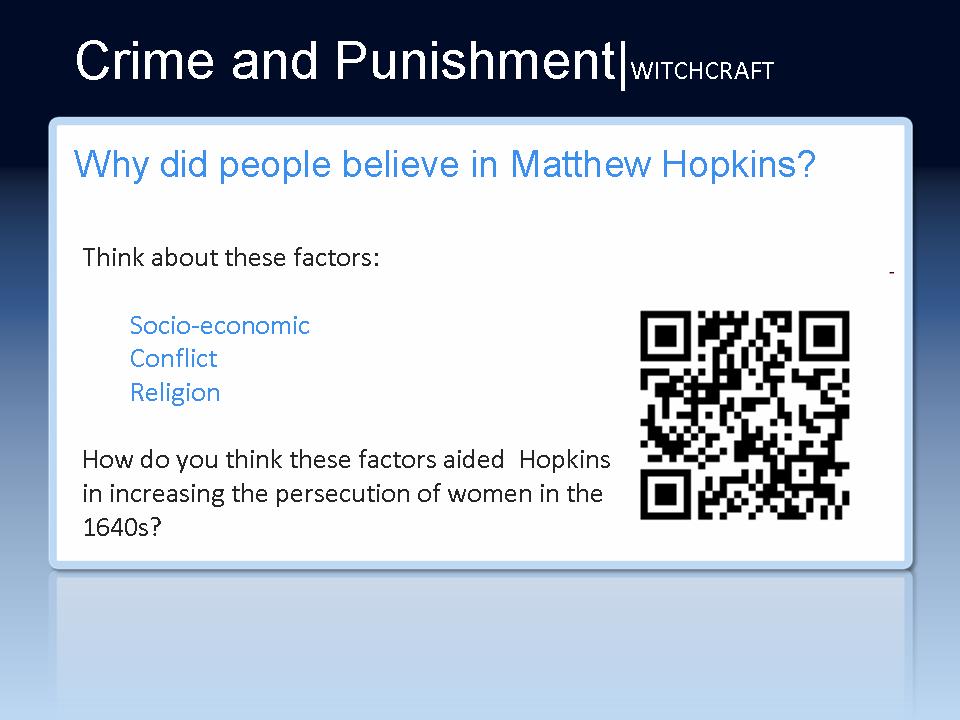
Image Credit: Example of QR Tag in a Powerpoint from Eat. Sleep. Teach.
UK eLearning blog Don't Waste Your Time expands upon the usefulness of linking shortened URLs with QR codes. The codes generated by shortened URLs are less complex and more likely to be read easily by more mobile phone readers, even at the back of the class. Shortened URLs also ease access for students using computers. Some uses suggested on this site are mainly for presenting additional information that you don't have time to cover in class including videos, links, online readings, etc. Instructors could even link to library e-book links or call numbers for interested students, links to polls or surveys, or to audio copies of the lecture, online course content, extra credit or take-home assignments. QR Codes are also quick ways to allow students to share contact info for out-of-class collaborations or peer reviews or to create direct links to blog entries. I've also found browser plug-ins that generate QR codes to be useful in allowing students to instantly and paperlessly save articles they have found online or library call numbers.
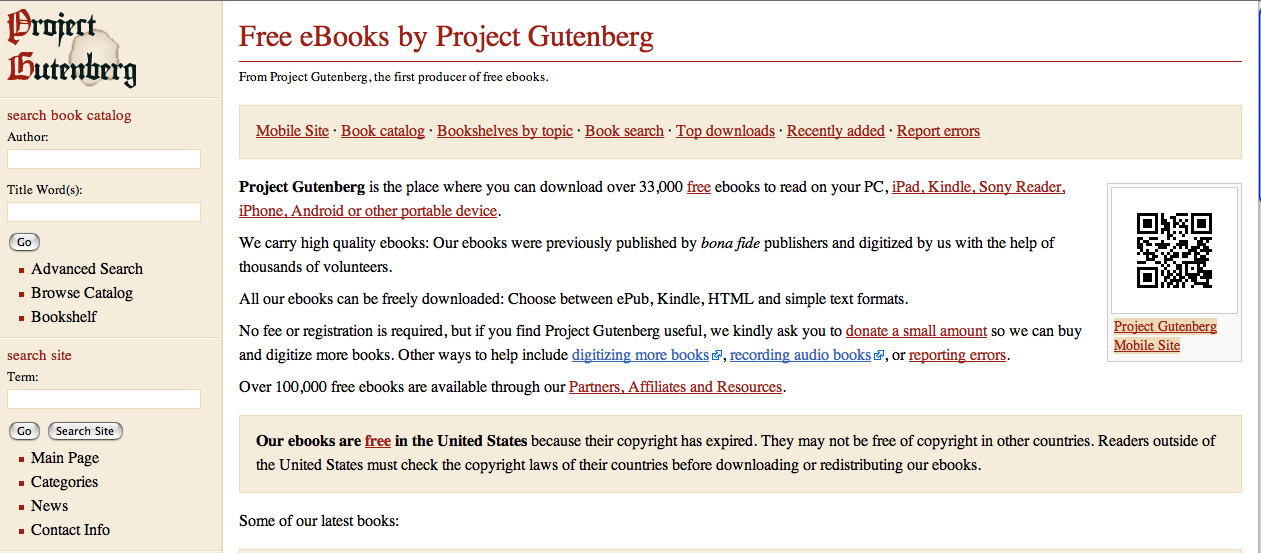
Image Credit: QR Link to Mobile Project Gutenberg Site on Main Page
For classes focused on digital media and writing that seek to incorporate mobile technologies into the classroom, QR codes are a great way of linking up information. In other types of courses, they are a convenient way to link sources and ideas together in a flowing and natural way. While quite a few exercises in QR coding end up being too complex - I have found that simple codes like URLs, phone numbers, email addresses work better than the more complicated codes like those featured in QR Comic (where I frequently had to "cheat") - these codes are great for linking up information in simple and easy to use format that encourages students to learn using a variety of different platforms.
As technologies improve, the smart phone market expands, and more students become familiar both with how these codes work, QR codes will likely play a significant part in classroom life. These codes suggest a horizon of future possibilities for visually encoded information that will not only spread information but suggest new connections and possibilities.
Recent comments
2 years 29 weeks ago
2 years 44 weeks ago
2 years 44 weeks ago
2 years 50 weeks ago
3 years 4 weeks ago
3 years 4 weeks ago
3 years 4 weeks ago
3 years 6 weeks ago
3 years 6 weeks ago
3 years 6 weeks ago